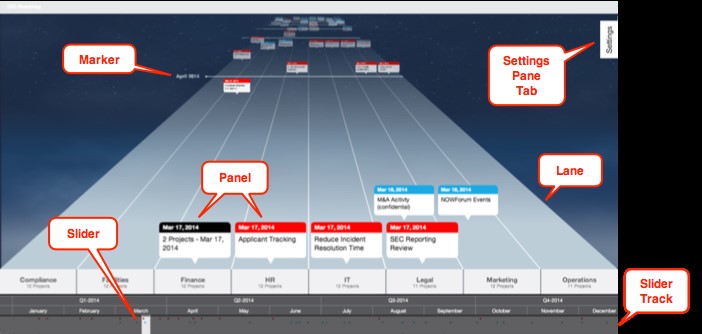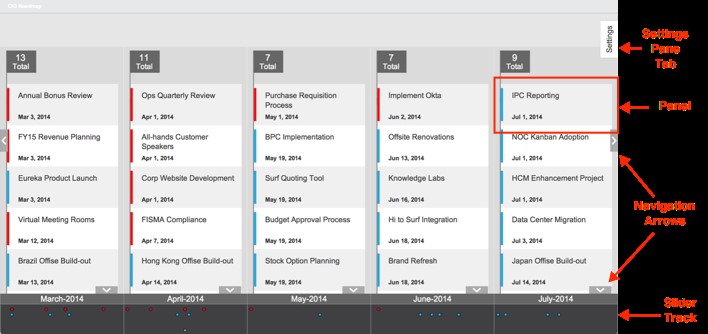Roadmaps – Taking the Complexity Out of Today’s Complex Systems
by Taras Alexander Mykytyn
Managing a complex system development being developed is extremely challenging and requires extensive coordination between all stakeholders, technical teams, leadership and decision makers, operational support teams, and the customer/end users. Delivering complex systems capabilities into operations in a timely and efficient manner requires a thorough understanding of each product/service teams planned deliverables, as well as the inter-dependencies for achieving integration, testing, deployment, and support milestones. It sounds like a daunting task, but bringing together streamlined processes, program management tools, and technology can address this challenge, and provide a management capability to plan, track, monitor, and execute their yearly executable and multi-year projected plans.
Understanding baseline management, having disciplined configuration/change control processes, mapping out key inter-dependencies between interfaces, and generating integrated tracking plans for phased deliverables, can breakdown the complexity and bring great efficiencies to the program management of a complex system development effort. Strong systems engineering processes supporting program managers can ensure greater success in a program and buy down risk tremendously for all stakeholders.
Systems engineering discipline brings end-to-end processes incorporated into a product/services life-cycle, covering configuration, change, release, and configuration management through a database (CMDB), knowledge management through the database (KMDB), product/service tracking and management through a product/service catalogue, workflow management, security operations management, and advanced operational analytics/reporting/visualization for planned baselines and future projected capabilities. Integrated project timelines provide tracking of various swim lanes and present the inter-dependencies for the various teams executing program deliverables.
Figures 1a & 1b. depict a project timeline view out of a commercial tool, in this case – ServiceNow. These views provide direct visibility into what’s being planned for delivery into operations.
Figure 1a. ServiceNow View of an Integrated Project Timeline Across Multiple Swim Lanes
Figure 1b. Timeline View of Project Deliverables
1) Why a Roadmap? Another important tool, beyond an integrated project timeline tool, is a roadmap tool depicting specific milestone deliverables with embedded hot links into more detailed information for specific time periods, noted phased capabilities, and expected deliverables and dependencies for each milestone. The following information presents the significance of roadmaps, types of roadmaps, and information on managing baselines.
Roadmap quickly displays specific “swim lanes” that have activities/dependencies tracked and managed. As a program management tool, it helps with communications, planning activities, ensures engineering activities drive out requirements/interfaces/dependencies/integration points/capabilities definitions, etc.). Types of roadmaps that can aid program managers and stakeholders are presented below.
ITI/Services Technology Roadmap – (planned IT upgrades and/or new deployments to support the data centers and end-users; includes servers, storage, network, desktop, laptop/tablets, printers, etc.).
Software/Capabilities Roadmap – (planned software updates and/or new functionality related to the ITI assets and interfacing with new services, locations, and integrated capabilities; includes external software support and maintenance contracts).
Acquisition Roadmap – (contracts for procurement of and support/maintenance for yearly/new hardware, software licenses, professional services, etc.).
Process/Training Roadmap – (planned updates and/or new processes for end users, support personnel, management/decision-makers, and associated training for new processes, software, and/or capabilities).
People/Skills Roadmap – (planned new skills and associated addition of new personnel for the support and management staff to keep up with new technology, tools, processes, software tools/capabilities).
Security/Compliance Roadmap – (planned software patches, unplanned software patches, updates to business rules for compliance and security operations, etc.).
Technology Roadmap – (vendor planned updates/new technology that is part of the technology refresh or obsoleted hardware/software where support, operations, security, and/or compliance are impacted).
Note: Sample roadmaps are provided in Figures 2a & 2b below.
Figure 2a. Product/Services Roadmap with Quarterly Details Denotes
Figure 2b. Product/Services Roadmap with Specific Service Details Provided
2) Configuration & Baseline Management (understanding what is critical to put under configuration control; who needs this information and what will they use it for; managing baselines to address current capabilities that are supported, transitioning new/upgraded capabilities into operations; foundation for monitoring and managing ITI and services in the enterprise).
“As-Is” Baseline (foundation for what needs to be monitored and managed; understanding hardware and software deployed; inventory/asset/license management; and setting baseline for planning future capabilities).
“To-Be” Baseline (foundation for where your architecture and services are transitioning to – “end state”; leveraging technology refresh, new (and potentially disruptive) technology; helps with converging services/capabilities planning; sets foundation for all planning activities).
“Planning” Baseline (list of services/capabilities to be deployed into operations; continuous feedback on performance and utility of services/capabilities; including patches/minor upgrades, as well as major enhancements and updates; foundation for programmatic and investment plans; capturing all dependencies and impacts for the Roadmap “swim lanes”; business case and operational impacts captured for stakeholders, user base, and decision-makers).
Tools and technology for Baseline Management (Configuration Management, Asset Management, Inventory Management, License Management for current and planned future services/capabilities; Capabilities/Service Catalog for current and planned future capabilities/services).
In summary, Product/Services Roadmaps can provide a very distinct view into what phased capabilities are currently planned for delivery into operations. It provides the program manager, engineering staff, executive leadership, operational support teams, stakeholders, and customers/end users insight into capabilities being planned for delivery. The roadmap and project timeline tools, underlying processes and technology (i.e., CMDB, KMDB), and advanced visualization tools provide the foundation for managing baselines and coordinating activities between the development, integration, testing, deployment, and operational support teams. There should be no surprises for all of the stakeholders that hold a vested interest in the successful delivery, transition, and operations of planned products and services.




